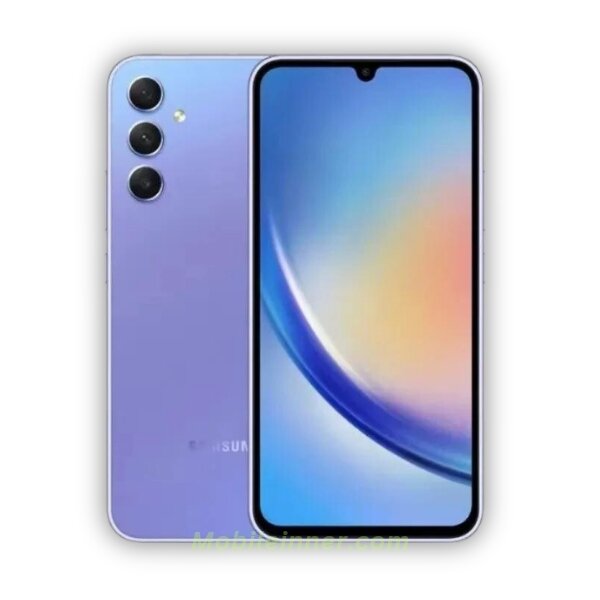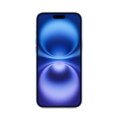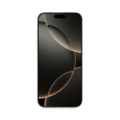- Home
- All Phones
- SAMSUNG
- Samsung Galaxy A34
Samsung Galaxy A34



Full specification
General
| Device Type | Smart Phone |
| Model | SM-A346E, SM-A346B, SM-A346B/DS, SM-A346B/DSN, SM-A346E/DS, SM-A346E/DSN, SM-A346M, SM-A346M/N, SM-A346M/DSN, SM-A3460 |
| Released | 24, March 2023 |
Design
| Dimensions | 161.3 x 78.1 x 8.2 mm |
| Weight | 199 g |
| Build | Glass front, plastic back, plastic frame |
| IP Rating | IP67 |
| Colors | Silver, Lime, Graphite, Violet |
Display
| Display Type Display Technology => A number of display technologies and types used in mobile phones => TFT (Thin Film Transistor), IPS (In-Place Switching), OLED (Organic Light Emitting Diode), AMOLED (Active-Matrix Organic Light-Emitting Diode), Super AMOLED (an even advanced version of AMOLED), Resistive Touchscreen (Resistive touchscreens contain two layer of conductive material with a very small gap between them which acts as a resistance), Capacitive Touchsceen (Capacitive touchscreen technology consists of a layer of glass coated with a transparent conductor) | Super AMOLED, 120Hz |
| Size | 6.6 inches |
| Resolution | FHD+, 1080 x 2340 pixels |
| Pixel Density Pixel Density (PPI) is refers to the concentration of pixels on a particular display, measured in pixels per inch (ppi). Pixel density is calculated by dividing the diagonal pixel resolution of a display by its diagonal size, higher pixel density better display quality. | 390 ppi |
| Protection Display Protection => Gorilla Glass is a special alkali-aluminosilicate glass shield with exceptional damage resistance that helps protect mobile displays from scratches, drops, and bumps of everyday use, It is always better to go for a smartphone with Gorilla Glass for that added protection and peace of mind. | Corning Gorilla Glass 5 |
| Features | Water Drop Notch, Always-On Display, HDR10+ |
Software
| OS OS => Every computer system run on a base software called Operating System (OS). Operating System controls all basic operations of the computer (such as smartphone, PDAs, tablet computers and other handheld devices). The Operating System allows the user to install and run third party applications (apps), apps are used to add new functionality to the device. | Android 13 |
| UI UI or user interface of a device is the look and feel of the on-screen menu system. How it works, its color scheme, how it responds to button presses, all of these things are part of the user interface. | One UI Core 5.1 |
Hardware
| Chipset Chipset is a group of integrated circuits designed to perform one or a more dedicated functions, often with real time computing constraints, Popular smartphones are equipped with more advanced embedded chipsets that can do many different tasks depending on their programming. | Mediatek MT6877V Dimensity 1080 (6 nm) |
| CPU CPU (Central Processing Unit) mostly known as processors, CPU processes instructions in order to carry out certain functions that make your device operate properly. Processors are often described as the brain of computers, smartphones and tablets, Smartphones and tablets rely on processors to carry out their every task, Processors are an incredibly important factor in selecting any type of computing device, including your smartphone. | Octa-core (2x Cortex-A78 • 2.6 GHz + 6x Cortex-A55 • 2.0 GHz) |
| GPU GPU (Graphics Processing Unit) is a single-chip processor designed to rapidly manipulate and alter memory to accelerate the creation of images in a frame buffer intended for output to a display, This includes things such as lighting effects, object transformations, and 3D motion. | Mali-G68 MC4 |
Memory
| Card Slot Memory Card Slot is a special slot for inserting a memory card. Memory cards allow you to expand the phone's built-in memory, A memory card (sometimes called a flash memory card or a storage card) is a small storage medium used to store data such as text, pictures, audio, and video, for use on small, portable or remote computing devices such as mobile phones, mp3 players, digital cameras. | microSDXC, shared SIM slot |
| RAM RAM (Random Access Memory) is a type of computer memory that can be accessed randomly, any byte of memory can be accessed without touching the preceding bytes that allows information to be stored and accessed quickly from random locations. RAM is the most common type of memory found in computer systems, smartphones, tablets and other electronic devices. | 6 GB, 8 GB |
| RAM Type | LPDDR4X |
| ROM Internal Storage is a data storage space (flash memory) mostly used in smartphones, tablets and other electronic devices where operating system, apps, music, photos, videos, files and other user data Is stored. | 128GB, 256GB |
| Type Design Type called form factor refers to a mobile phone's size, shape, and style as well as the layout and position of major components of phone. There are three major form factors seen in mobile phones => bar phones, folding phones and sliding phones. | UFS 2.2 |
Camera
| Primary Camera is able to capture photographs and usually videos, The most important characteristics of a camera are the resolution (measured in megapixels), lens focus type (fixed or automatic), higher megapixel cameras are known to capture higher quality photos, but not always a good measurement of the photos quality. |
48 MP, f/1.8, 26mm (wide), PDAF, OIS (Sensor Sony IMX582 Exmor RS, Sensor size 1/2.0, Pixel size 0.8µm) 8 MP, f/2.2, 123˚, (ultrawide) (Sensor Samsung S5K4HA, Sensor size 1/4.0, Pixel size 1.12µm) 5 MP, f/2.4, (macro) (Sensor GalaxyCore GC5035, Sensor size 1/5, Pixel size 1.12 µm) |
| Video |
720p@480fps, 1080p@30/60fps, 4K@30fps |
| Features | LED flash, panorama, HDR |
| Selfie |
13 MP, f/2.2, (wide) (Sensor Sony IMX258, Sensor size 1/3.1, Pixel size 1.12µm) |
| Video |
4K@30fps, 1080p@30fps |
Media
| FM Radio | No |
| Loudspeaker | Yes, Stereo speakers |
| 3.5mm Jack | No |
| Alert Types | Vibration & Ringtone |
Connectivity
| Bluetooth Bluetooth is a wireless communications technology for exchanging data between mobile phones, headsets, computers and other network devices over short distances without wires, Bluetooth technology was primarily designed to support simple wireless networking of personal consumer devices. | 5.3, A2DP, LE |
| Wi-fi Wi-Fi is a popular wireless networking technology using radio waves to provide high-speed network connections that allows devices to communicate without cords or cables, Wi-Fi is increasingly becoming the preferred mode of internet connectivity all over the world. | Wi-Fi Direct, Wi-Fi 802.11 a/b/g/n/ac, dual-band |
| Wi-fi Hotspot | |
| USB | USB Type-C 2.0, OTG |
| GPS GPS The Global Positioning System is a satellite-based radio navigation system, GPS permits users to determine their position, velocity and the time 24 hours a day, in all weather, anywhere in the world, In order to locate your position, your device or GPS receiver must have a clear view of the sky. | Yes- GPS, GLONASS, GALILEO, BDS |
| NFC NFC (Near field communication) is a set of standards for smartphones and similar devices to establish peer-to-peer radio communications with each other by touching them together or bringing them into proximity, usually no more than a few inches. | |
| Infrared Infrared connectivity is an old wireless technology used to connect two electronic devices. It uses a beam of infrared light to transmit information and so requires direct line of sight and operates only at close range. |
Features
| Sensors Sensors are electronic components that detects and responds to some type of input from the physical environment. The specific input could be light, heat, motion, moisture, pressure and location, The output is generally a signal that is converted to use in computing systems, a location sensor, such as a GPS receiver is able to detect current location of your electronic device. |
Fingerprint (under display, optical), accelerometer, gyro, compass Virtual proximity sensing |
Network
| Technology | GSM / HSPA / LTE / 5G |
| 2G Network | GSM 850 / 900 / 1800 / 1900 |
| 3G Network | HSDPA 850 / 900 / 1700(AWS) / 1900 / 2100 |
| 4G Network | B1, 2, 3, 4, 5, 7, 8, 12, 17, 20, 26, 28, 32, 38, 40, 41, 66 |
| 5G Network | n1, 3, 7, 8, 20, 28, 38, 40, 41, 77, 78 SA/NSA/Sub6 |
| SIM SIM (Subscriber Identity Module) is a small card that contains mobile network subscriber's account information. This allows the phone using the card to attach to a mobile network. The SIM card is most commonly associated with GSM and UMTS mobile networks. Moving a SIM card from one phone to another allows a subscriber to switch mobile phones without having to contact their mobile network carrier. SIM cards can also be used by a phone to store limited amounts of data, such as phone numbers and text messages. | Nano SIM, eSIM |
| Dual SIM | Yes, Hybrid Dual SIM, Dual stand-by |
| Speed | HSPA 42.2/5.76 Mbps, LTE-A, 5G |
Battery
| Battery Type Battery Type => Cell phones run on various kinds of batteries depending on the manufacturer, phone size or shape and features. There are basically four types of cell phone batteries => Lithium Polymer, Lithium Ion, Nickel Metal Hydride and Nickel Cadmium. | Li-Poly (Lithium Polymer) |
| Capacity Battery Capacity is a measure (typically in Amp-hr) of the charge stored by the battery, and is determined by the mass of active material contained in the battery. The battery capacity represents the maximum amount of energy that can be extracted from the battery under certain conditions. | 5000 mAh |
| Charging | 25W Fast charging |
| Wireless Wireless Charging (Inductive Charging) uses an electromagnetic field to transfer energy between two objects. This is usually done with a charging station. Energy is sent through an inductive coupling to an electrical device, which can then use that energy to charge batteries or run the device. | No |
| Placement | Non removable |
| Standby Standby Time is the total amount of time that you can leave your is fully charged, turned on and ready to send and receive calls or data transmissions before completely discharging the battery. | NA |
Samsung Galaxy A34 Overview
Hey there! Have you heard about the Samsung Galaxy A34? It’s a brand-new mid-range smartphone that was just launched in March 2023. Oh, it’s got an excellent design! The body is plastic, and the front has Gorilla Glass 5 protection. Oh, cool! So, the phone is dust and water-resistant with an IP67 rating.
The Galaxy A34 has an excellent 6.6-inch FHD+ Super AMOLED display with a waterdrop notch. Oh, nice! The screen has a 120Hz refresh rate, so scrolling and gameplay will be super smooth. Oh, and it also supports HDR10+ and an Always-On display feature. The A34 runs on a MediaTek Dimensity 1080 chipset, which is pretty powerful. So, this octa-core processor comprises two powerful ARM Cortex-A78 cores running at 2.6GHz and six more efficient Cortex-A55 cores running at 2GHz. Oh, so a Mali-G68 MC4 GPU takes care of the graphics.
The phone comes with three different RAM and storage options. You can choose between 6GB of RAM and 128GB of storage, 8GB of RAM and 128GB of storage, or 8GB of RAM and 256GB of storage. A dedicated microSD card slot also expands the storage even more. It’s running on the latest Android 13 OS with One UI 5.1. The Galaxy A34 has an excellent camera setup! It’s got three cameras on the back: a 48MP primary camera, an 8MP ultrawide camera, and a 5MP macro camera. Oh, by the way, the selfie camera in the dewdrop notch is a 13MP sensor. I just thought you might want to know! The video recording can reach 4K at 30 frames per second.
Some other cool features of the phone are an in-display fingerprint scanner, 5G support, Wi-Fi AC, Bluetooth 5.3, NFC, stereo speakers, and a big 5,000mAh battery that charges super fast at 25W. The Galaxy A34 is a superb phone! It has a sleek design, a vibrant AMOLED display, a capable mid-range processor, and takes fantastic photos. It’s a great choice if you’re looking for a mid-range phone in this price range. Yeah, it’s got a solid set of features and performs well for the price.
Samsung Galaxy A34 Pros and Cons
We are trying to highlight the pros and cons of Samsung Galaxy A34
User Reviews
Disclaimer Note
We cannot guarantee that the information on this page is entirely 100% accurate.
















